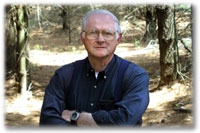Photo by Steve Apps
Fifty years ago, I bought a Concord grape vine. Just one. I had put up a split rail fence around my yard and thought a grape vine growing on it might be a nice touch. I knew absolutely nothing about growing grapes. My only experience had been with wild grapes that grew on my farm, sometimes with vines that grew to the top of trees.
For the first couple of years, the vine sputtered along, growing a few feet and producing a small handful of grapes. Each year it grew a bit more, working its way along the top rail of my fence. One thing I learned was to heavily prune the vine each year, which I did. To the point that one of my relatives said, “Looks like you killed your grape vine.”
But the pruning served the opposite purpose, the vine thrived. It requires next to no care, beyond the annual pruning. One year I had an influx of Japanese beetles, which chewed on the big leaves. I picked the beetles off by hand, and little damage was done. My Concord grape vine likes hot weather. This year it produced a bumper crop, more than half a bushel of beautiful purple grapes.
Always curious, I did a bit of checking on the history of Concord grapes. They got their start in New England when a fellow by the name of Ephraim Wales Bull collected some 20,000 wild grapes and grew them until he found the “perfect grape.” The year was 1854. He named the grape after his is home town of Concord, Massachusetts.
For years Ruth has made grape jelly from our grapes—what a great peanut butter and jelly sandwich results from the grape jelly. Grape juice is also tasty, and I’m told they also make a great wine, which I tried to make once.
THE OLD TIMER SAYS: One lonely grape vine, mostly ignored, can surprise you with a bountiful harvest.
WHERE TO BUY MY BOOKS:
To purchase my books, go to your local bookstore, order online from bookshop.org, or purchase from the Friends of the Patterson Memorial Library in Wild Rose—a fundraiser for them. Phone: 920-622-3835 for prices and ordering.
Patterson Memorial Library
500 Division Street
Wild Rose, WI 54984
barnard@wildroselibrary.
www.wildroselibrary.org




